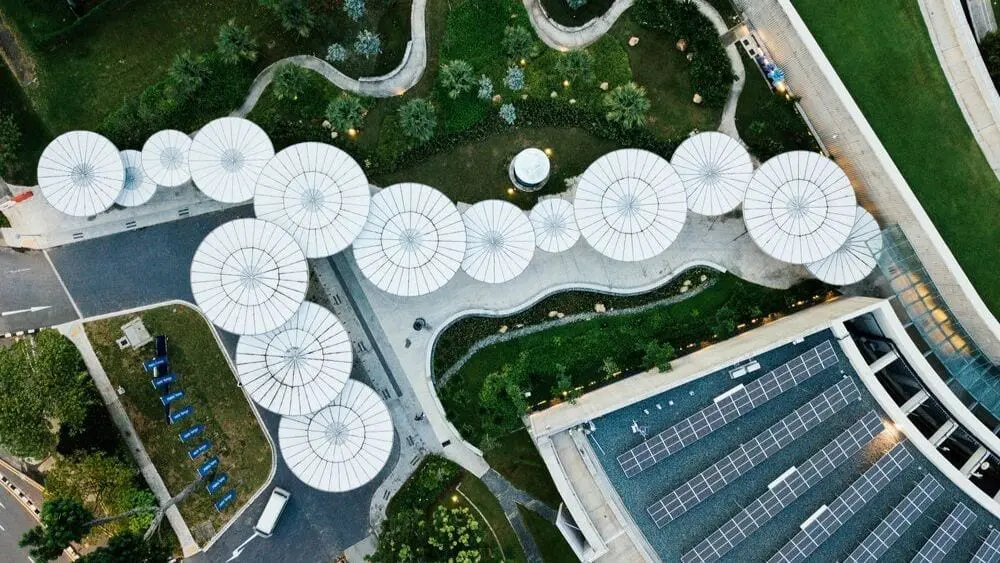
With today’s talk of sustainable lifestyles, emphasis on renewable energy and warnings of global warming, the interest in home solar power systems has never been stronger. At the same time, the cost of solar panels has dropped an estimated 70 percent over the past 10 years. The cost of a solar system in 2008 averaged $8 per watt produced. By 2018, the average cost dropped to $3.14 per watt.
“When I began installing solar panels 12 years ago,” says Paul LaBarbera, owner of Magitek Solar Solutions, Inc., a solar panel installer headquartered in Johnsburg, IL, “they were roughly $3.50 a watt just for the panel itself. Now we’re doing complete installations that are under $3 a watt and the premium panels we are now installing produce 355 watts per panel.”
In addition, multiple solar federal, state, and local tax credits, rebates and financial incentives are also available. All of this makes home solar systems – if you’ll pardon the pun – a very hot item.
PV Cells and Grid Meters
Solar panels measure roughly 3 feet by 5 feet and weigh about 40 pounds. Arrays of multiple panels are secured to your roof by panel mounts and wired together. The size of the system depends on your home’s energy use and can be expanded as needed.
The majority of home photovoltaic (PV) systems are connected to the electrical grid and have a utility meter. These systems send excess energy back to the grid when your solar system creates more energy than you’re using and receive energy from the grid when your home is using more electricity than your system is generating. As a rule of thumb, a square foot of conventional photovoltaic panels in steady sunlight will yield 10 watts of power.
But not all solar panels are the same. The cost of panels can range from $0.40 per to $1.20 per watt depending on the panel quality and production, says LaBarbera. Flexible second generation and ink-based third generation solar panels are also in the works.
A typical residential solar system will need to produce 5 to 10 kilowatts (kW). With a south facing solar array and 5 hours or more of sunlight per day, 5 kWs of direct current (DC) power should produce 350 to 850 kilowatt hours (kWh) of alternating current (AC) power per month.
Planning a Solar System
Designing a residential photovoltaic (PV) system can take a couple of weeks but installation can be done in a few days. Ideally, the planned roof area faces as close to South as possible, is slanted about 30 degrees, and is not in shade. It’s also best if the roofing material is relatively new and consists of asphalt shingles rather than tile, slate or wood shakes.
About 100 square feet of solar panels are required to produce a kilowatt of electricity. As noted below, a typical residential solar system produces 5 to 10 kWs. Accordingly, your rooftop solar array will take up approximately 500 to 1,000 square feet.
Cost and Payback Time
Solar panels are low maintenance, requiring only an occasional wipe to clear snow or leaves. Panels usually last 25 to 30 years and can increase the value of your home on resale.
LaBarbera is cautious about providing specific figures on the resale value of solar equipped homes.
Such figures are subjective and very greatly by region, he says. “As of early 2017, there had been only about 1,200 residential solar installations in Illinois,” he notes. “Reliable resale data is as yet unavailable. But there is solid data in California. Some reports show that solar-enhanced resale values could account for up to 97 percent of the installed cost of a solar system.”
The cost of a home solar system obviously depends on the system size and the amount of power it must produce to meet your needs. In 2018, homeowners were typically paying $3.14 per watt of electricity produced by a PV system. Typically, home solar systems need to produce at least 5 to 6 kWs of power. Accordingly, the cost of these home systems would be $15,700 to $18,840 before credits, rebates or financial incentives.
LaBarbera notes a somewhat larger array is often needed. “The $3.14 per watt figure is about right for installed watts,” he says. “The average size home on which we install solar panels in Illinois is 2,400 square feet. These systems produce between 7 and 10 kWs. You multiply this times the system size. So, a 7.6 kW inverter or a system size of 7,600 watts times $3.14 puts you at about the $23,000 to $24,000 range.”
How much a solar system will save on utility bills depends on the amount of sun and snow your location receives. While it’s not likely your system will offset all of your home energy costs, it could easily cut your home energy bill by two-thirds to three-quarters. LaBarbera estimates that to get to “net zero” in Illinois (i.e. a solar system that eliminates the need to buy energy from the utility) you need an optimal south-facing solar system with a size “right around 7.5 kilowatt hours.”
How soon will electric bill savings cover the cost of your solar system? Not counting government incentives, the “break-even” point ranges across the country from 5 to 10 years. With a south facing roof, LaBarbera says, payback should come in 7 years or less – a very favorable return on investment or ROI.

Roy Diez is a freelance writer and marketing professional specializing in the architectural, building and construction industry. He is a former editor-in-chief of Professional Builder magazine.
 New Home 101: Building Your New Home
New Home 101: Building Your New Home